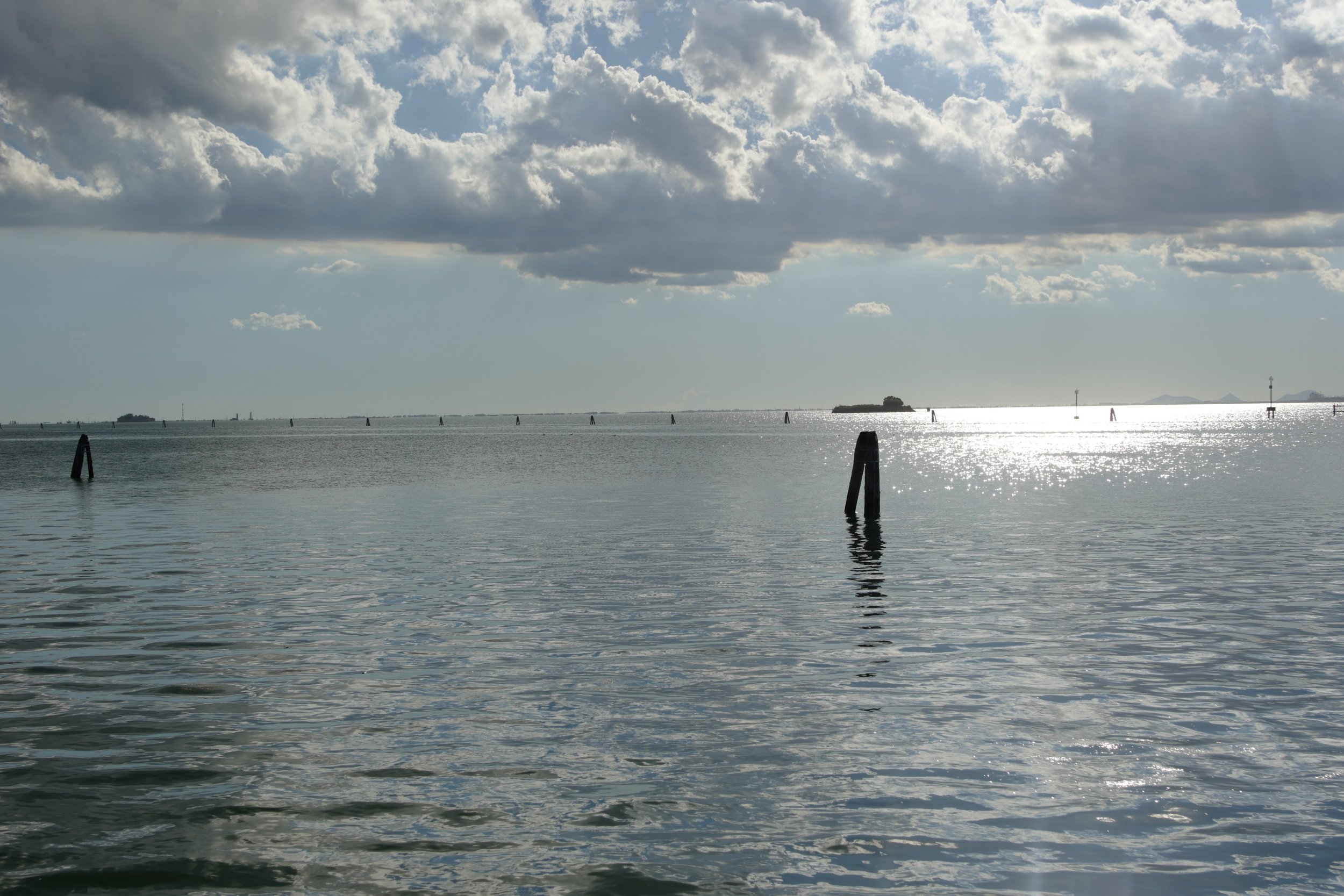Lido di Venetia, 2025
ECCENTRIC ELEGANCE ON THE LIDO’S INDIE SIDE
Inside Quattro Fontane, the Lido Hotel that Time Forgot—and We’re Lucky It Did
I am still in doubt if the look on her face was one of disbelief or despair. She stood motionless at the perfectly decked-out breakfast buffet—a rarity in Italy—staring at a stack of white sandwiches near the toaster. Immobility near a breakfast buffet is not a common attitude among hotel guests.
Unless they're hung over.
She looked American and distinctly sober.
"What is that white cube?" she asked.
Whenever I hear an Australian accent, I half-expect AC/DC's Thunderstruck to start playing—the soundtrack to a dust-trailing road train speeding past Angus Young duckwalking in his schoolboy uniform. Maybe my imagination is too boyish. Just add a koala, and you’ve got the full Aussie cliché.
I also exhibit an uncontrollable impulse to answer rhetorical questions.
A comtoise clocks ticks assuredly in the hall; an analog reminder of the hotel’s history.
Tramezzini, I told her, figuring that it was the sandwiches she was puzzled about. The breakfast staff are like mothers to their guests; they cut the crusts off.
The women of Quattro Fontane, like the hotel itself, exude an easy warmth—habitual, unforced, as if woven into the walls.
There’s an easiness to them. They don't seem to work in this hotel; they belong to it. Some have been here for decades, passing through the hotel’s sun-dappled halls as naturally as the afternoon breeze through the pines in its garden. The hotel’s character is built on their humble acts—crustless sandwiches, a morning greeting that lingers longer than expected, a cappuccino arriving at your breakfast table before you asked for it.
These aren't gestures from a hotel management's playbook; they are personal expressions of hospitality, worn in over the years.
Quattro Fontane is a time capsule. It is not the grandest nor the most opulent of Lido di Venezia’s lodgings. But it has something that all others lack: a refusal to conform and a pride in displaying eccentricity. Built in the early 20th century, it carries the remnants of the Belle Époque, when Lido was the playground of European aristocracy. Unlike the larger hotels that have modernized into sleek anonymity, Quattro Fontane has kept its strange collection of artifacts—a comtoise clock ticking assuredly in the hall, ceramic plates with faces staring out from the walls, an air of subdued theatricality. You visualize the ravishing Florinda Bolkan to have walked in straight off a shoot of The Anonymous Venetian, just in time for aperitivo.
The theatrical dining room with its checkered floor and fiery-red high-back chairs in the morning sun.
That sense of cultivated oddity is no accident. The Bevilacqua family, who have owned and run the hotel since 1954, have shaped Quattro Fontane into an intimate, lived-in labyrinth of curiosities. Bente Bevilacqua, an architect by training, infused the place with a collector’s eye, filling its spaces with relics from across the world, each object finding its own peculiar place in the hotel's grand mosaic. The result is a property that feels less like a business and more like a family’s sprawling, ever-expanding cabinet of wonders. Its rooms are a layering of history: coat hooks that seem to come straight off a mountain hut, French Freemason aprons, saffron-painted woodwork, Neoclassical columns, and the occasional Danish touch—a nod to Bente’s heritage.
Lido di Venezia itself is an island of contrasts. Most of the year, it remains suspended between its glamorous past and its sleepy present, a place where the ghosts of the 1920s still haunt the halls of hotels like Quattro Fontane. It is a place of bicycles and quiet streets. A place to sit outside cafés with an espresso and watch the world move to the rhythm of the Adriatic breeze.
But in September, the island transforms with the Venice Film Festival; security crews block the streets around the Palazzo del Cinema, the air is dense with chic and elegance, and film stars and directors bring a different kind of spectacle. If big-budget productions fill the Excelsior, Quattro Fontane's nonconformity is the hangout for the indies to sip their negronis until late under its pine trees.
The Australian woman picked up a few tramezzini and took them to her table. She seemed out of place, slumped on the flaming red high-backed chair in the dining room. I wondered what she made of it all. The unfamiliarity of the food, the odd collection of objects around her, the way the hotel felt both charming and slightly surreal. She picked up a tramezzino gingerly, as though it might come alive when she took it to her mouth.
She turned toward me.
"Not bad. Just very… white."
A new cappuccino appeared at my table.
The woman took another bite. A slow nod. Approval. Then she left—lost in her thoughts. Like everyone who checks out from here, but never fully lets go.
Subscribe to get full access to the newsletter and publication archives.










